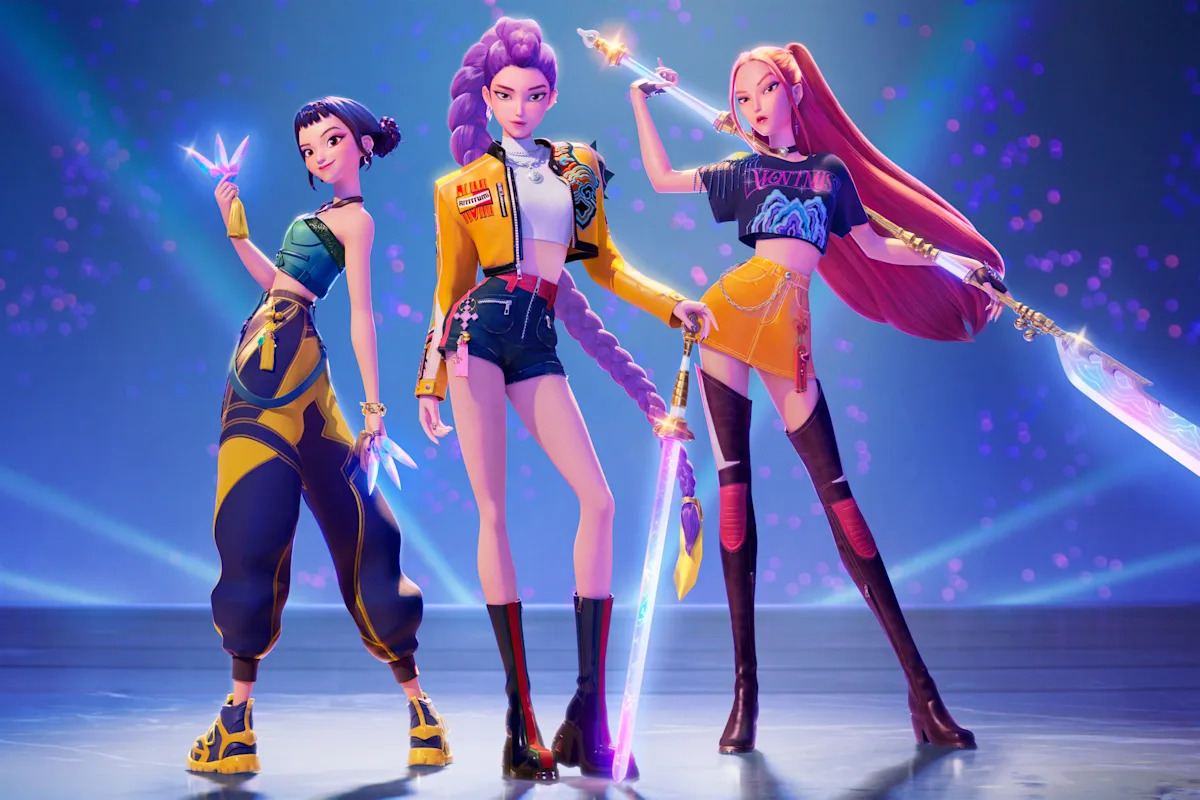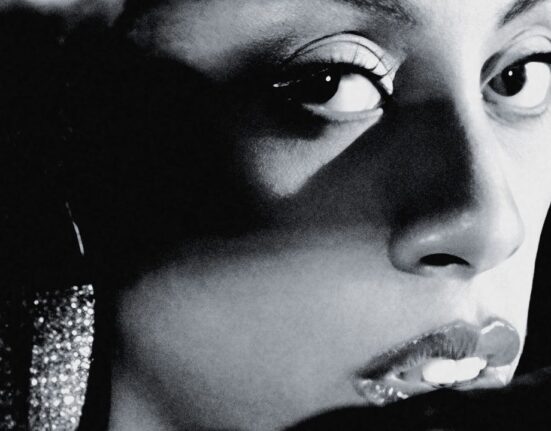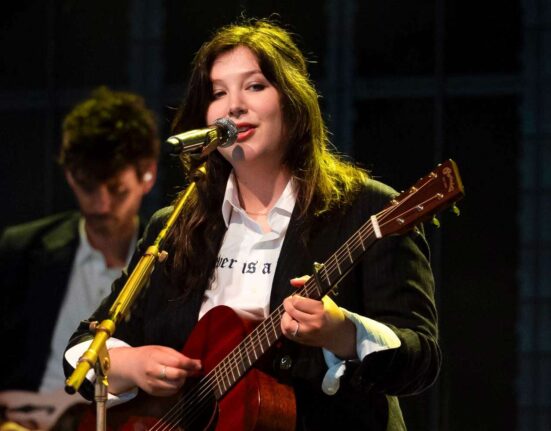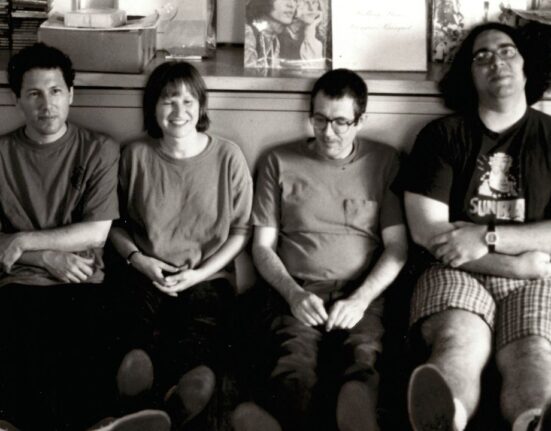It’s Netflix’s biggest movie of all time, with 314 million views and counting. Its soundtrack hit No. 1 on Billboard’s album chart and is the first to ever have four songs hit the top 10 of the Billboard Hot 100 simultaneously. It was the No. 1 at the box office and made $18 million in one weekend, even though it was still available to watch at home. Kids are rewatching it and re-creating its most popular looks. Parents are watching it out of curiosity and loving it.
Rarely has an original movie infiltrated pop culture like KPop Demon Hunters. It’s hard to overstate just how massive this movie is. But no one should be surprised.
The sugary bubble gum pop music, bright visuals and infectious choreography that permeate the movie are all pretty typical of K-pop, a genre made up of largely South Korean boy and girl groups with millions of notoriously intense fans across the globe.
Before the Netflix film’s success, it seemed K-pop was just waiting for a mainstream streaming service to take a chance and market it to a broader audience of people hesitant to try something new. Now, it’s clear that it’s a powerhouse genre that’s nestled its way into pop culture just as much as country, rap or Latin music.
Fans made K-pop mainstream
K-pop is what people are hungry for, and the executives raking in cash right now have its fans, who have long evangelized for the genre, to thank for that.
Rochelle Kelly is one of them.
“K-pop going mainstream from my experience really was because of how engaged fandoms were online,” Kelly, a 27-year-old from New Jersey, tells Yahoo. “It’s a massive global community with a passion unlike anything else.”
Though Psy’s 2012 global hit “Gangnam Style” was the first predominately non-English K-pop song to become a cultural force, he wasn’t able to mobilize lasting fans as much as swoonworthy K-pop boy and girl bands were. Stacy Jones, CEO of influencer marketing company Hollywood Branded, tells Yahoo that BTS pioneered the “infrastructure” of fan support that many groups copy now. The seven-member boy band was the first K-pop group to break out in the U.S., quickly and skillfully earning the widespread enthusiasm of international young women just like the Beatles.
Fans of K-pop boy band BTS gather at Yeouido Park during “BTS Festa” in Seoul, South Korea in 2023. (Chung Sung-Jun/Getty Images)
Kelly has been a superfan of the genre since she was in high school in 2011, when she used multiple devices to give BTS music videos as many streams as possible and increase her chance of getting concert tickets. She stayed up until 2 a.m. to watch livestreams and was part of a group on Tumblr that mobilized to win her favorite groups awards and increase their acclaim and name recognition in the U.S.
This trend among fans continues to this day: They continue to voluntarily mobilize on X and Reddit to forcefully launch their favorite artists into the mainstream.
According to Luminate’s 2025 midyear music industry report, K-pop fans overindex in online community spaces like Discord, Reddit, WhatsApp and Twitch, which all “enable deeper fan engagement.”
That community is, in itself, compelling to people like Kelly — but it’s the high-quality visuals that keep her and so many other fans coming back for more. It’s all part of a machine, engineered by corporations to emulate perfection to churn out vigorous choreography, trendsetting fashion and gorgeous idols.
Bands need fans
The relationship between K-pop bands and their fandoms is symbiotic. Bands create content for fans, then fans create content for them, making their work even more popular. That’s necessary for K-pop groups to make the crucial pivot out of Korean pop culture and firmly into the U.S., where there are simply more people available to become fans and sustain their careers.
A cultural shift in the U.S. came first for BTS in 2017, when the group’s fans, known as Army, successfully infiltrated the online voting system for the Billboard Music Awards to earn the band the Top Social Artist award. Serona Elton, interim vice dean and chair of the music industry program at the Frost School of Music at the University of Miami, tells Yahoo that the feat earned BTS instant credibility on social media, which led to collaborations with English-speaking artists like Halsey, Steve Aoki and Coldplay, further introducing them to the mainstream. Since then, the band has only been on an upward trajectory.
Jimin, Jungkook, RM, J-Hope, V, Jin, and SUGA of the K-pop boy band BTS visit the “Today” show at Rockefeller Plaza in 2020. (Cindy Ord/WireImage via Getty Images)
Six of their albums have hit No. 1 and eight of their music videos have exceeded one billion views on YouTube.
BTS disbanded briefly at the height of their fame to complete South Korea’s mandatory military service requirement and work on solo projects, but is now poised for a massive comeback. Jones says BTS’ reunion in 2026 “will likely be one of the biggest cultural reset moments in recent memory.”
Plenty of incredibly talented and visually stunning groups never ascend to the success of BTS. Still, members of those groups are called idols. K. Kim, CEO of a PR firm that works with K-pop groups in the U.S. and South Korea, tells Yahoo that Americans still miss out on the “countless idol groups that debut in Korea,” only getting a highly curated selection of the best-of-the-best performers. That increases the pressure for both existing idols and those hoping to become them.
Idols and evangelism in the K-pop machine
Huntr/x from KPop Demon Hunters is a fictional girl group, but is comprised of real-life singers with experience in K-pop. Even singing as animated characters, the group has successfully broken out like other current chart mainstays like Twice, Katseye, Stray Kids, TXT and New Jeans — not to mention all the bands who have multiple members with successful solo careers, including Blackpink’s Rosé, whose collaboration with Bruno Mars became the first K-pop song to dominate Top 40 radio by leading Billboard’s Pop Airplay chart. “Golden” from KPop Demon Hunters is nearing the top of the chart as well.
Though fans of the fictional, animated band have an intense fandom, the actors and singers who gave them an onscreen voice were able to avoid some of the intensity that real-life girl group performers endure.
Zoey, Rumi and Mira perform onstage as Huntr/X in KPop Demon Hunters. (Netflix)
In K-pop, “artists are generally ‘hired’ rather than discovered, and then trained over years to behave like the idols the genre needs them to be,” Elton says. “They become characters that fans are drawn to. This paradigm of idol worship aligns very well with behaviors that take place on social media platforms between celebrities (idols) and their fans (worshipers) – it’s a match made in heaven.”
It mirrors religion. “Fans become evangelists for their favorite K-pop artist among their friends, helping expand the artist’s fan base exponentially,” Elton continues.
A K-pop fan since 2019, 27-year-old content creator Christel tells Yahoo that she’s felt the genre become more westernized in general since it started going mainstream. Groups are releasing more songs in English, and even though they’re abandoning some of their Korean culture, they’re also being freed from the intense rules and beauty conventions that hold them to a standard of near-holiness.
“They’re able to be edgier and more self-expressive … it’s 100% drastically different from what K-pop used to be,” she says. That innovation keeps fans coming back for more, increasing its popularity in the U.S.
Fandom beyond borders and screens
The fans behind screens and glued to streaming services have successfully made K-pop into a real-life, mainstream genre. Angel Vicioso, chief of playlists at TouchTunes, a modern jukebox app that allows fans to pay to play certain songs aloud in public, tells Yahoo that BTS and Blackpink are taking off on TouchTunes alongside major artists like Morgan Wallen and Beyoncé.
Rosé, Jennie, Jisoo, and Lisa of Blackpink at Coachella in 2023. (Emma McIntyre/Getty Images for Coachella)
“[K-pop’s] success reflects a combination of catchy tunes and an online community that’s more engaged and global than ever,” Vicioso says.
Fans aren’t just streaming music, either — they’re buying physical albums, merch and concert tickets.
The hunger for more K-pop content has turned those bands into more than just groups of performers — they’re trendsetters across beauty, lifestyle and fashion. According to Google Trends, KPop Demon Hunters inspired the top-trending nail design, hairstyle tutorial and cosplay in July. Michele Y. Smith, CEO of Seattle’s Museum of Pop Culture, tells Yahoo that idols “influence from multiple entry points … and they’re just getting started.”
The genre’s biggest idols have begun transcending musical performance and merch sales to dabble in careers outside of music, booking modeling gigs and big roles on shows like The White Lotus and Squid Game.
This isn’t just the story of how K-pop became mainstream. It’s likely a playbook on how other international genres can transcend borders in the future using high-quality visuals and engaged fandoms. K-pop artists are not just setting music trends, they’re shaping the future of the whole entertainment industry.











Leave feedback about this